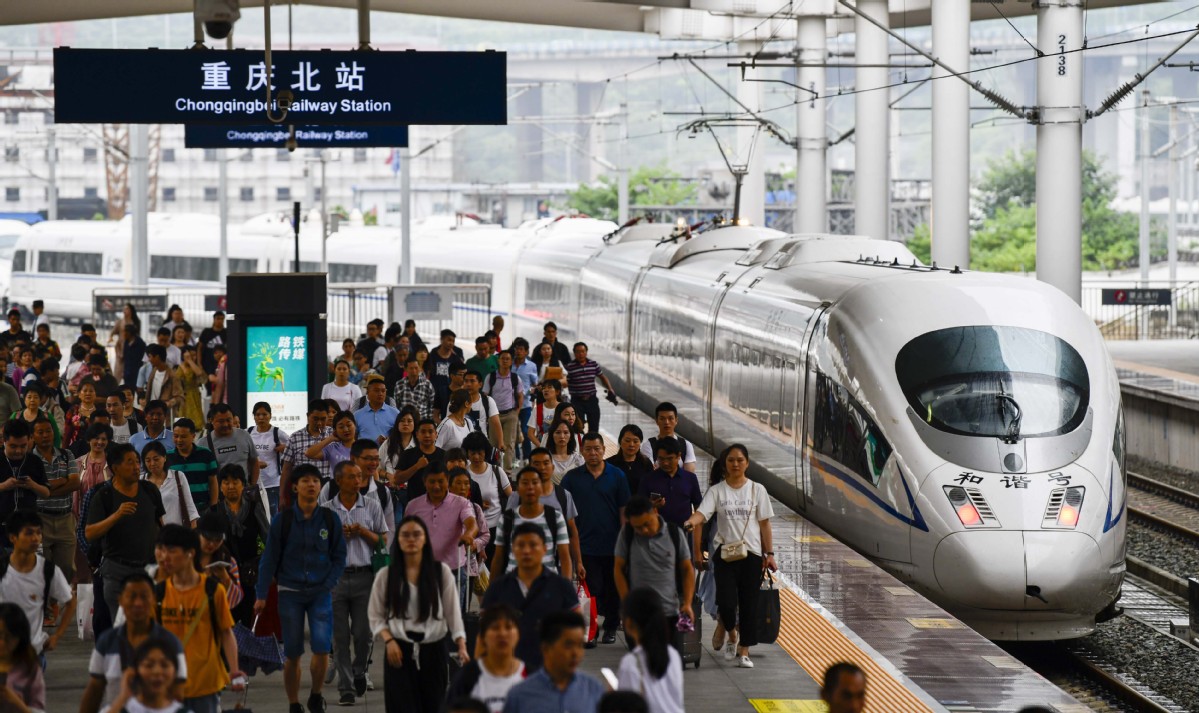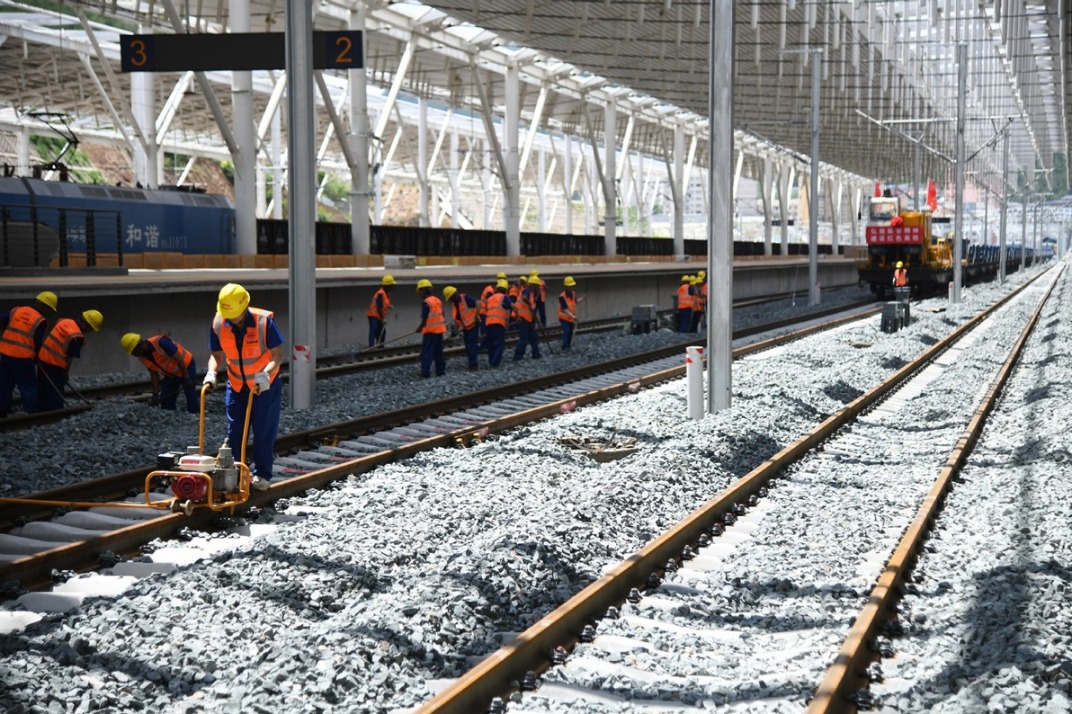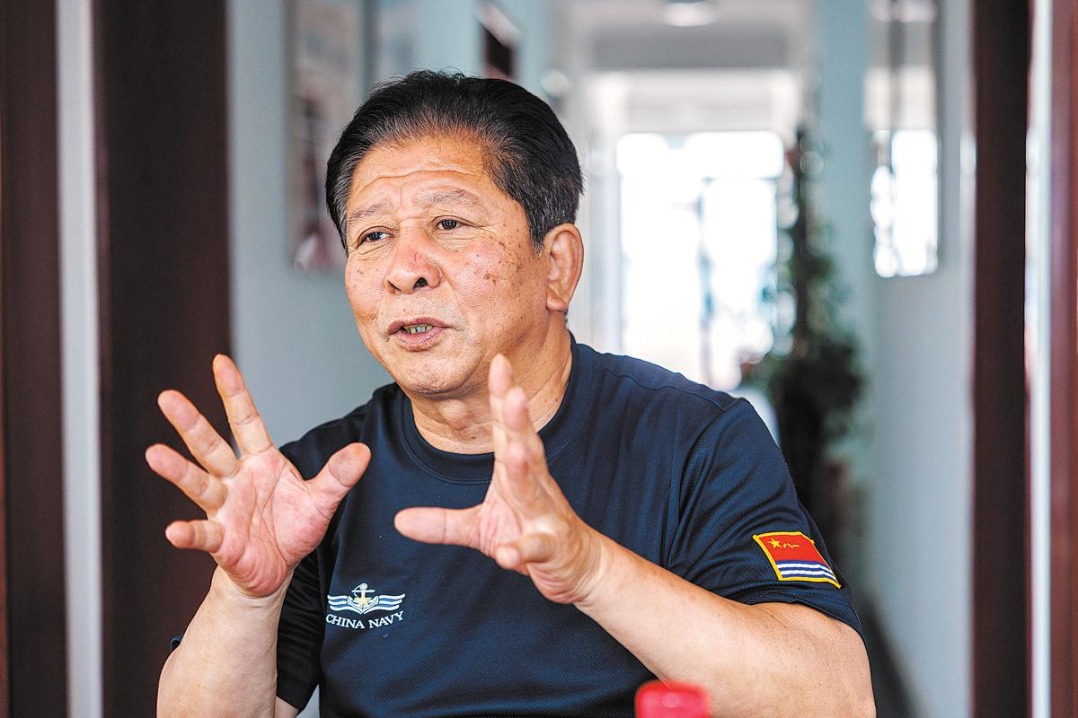Nation makes tracks for progress


Major project
The line, which has four tunnels, 14 stations and 125 bridges, now forms part of the 824-km Beijing-Baotou Railway that extends into Inner Mongolia.
Trains connecting Beijing, Ulan Bator, capital of Mongolia, and Moscow, the Russian capital, used to stop at Qinglongqiao station for about eight minutes, where tourists would get off to take pictures. But this service was switched to another route more than a decade ago.
The fate of Qinglongqiao station has not been decided. Since 2016, a new high-speed rail line has been under construction alongside the Jingzhang Railway, and is scheduled to open at the end of the year. The new line, with an operating speed of 350-km/h, is a major project for the Winter Olympics, which will be staged in Beijing and Zhangjiakou in 2022.
Trains on this line will use long tunnels that pass through the mountains just under the Y-shaped switchback.
Yang said: "The new railway, and the old one, both represent China's top engineering skills. Since railways first appeared in China, they have always been symbols of the country's modernity."
Enthusiasts are worried that the old line will be phased out with the arrival of the new one.
Wang Wei, who photographs trains, wrote in Chinese National Geographic that the old railway, especially the section in the mountains beside the Great Wall, should remain in use so that it can be preserved as a "living cultural heritage".
A steam locomotive could travel on the old railroad, and the route could also be an attraction for those coming to watch the Winter Olympics, he wrote.
In India, steam locomotives ferry tourists along the Darjeeling Himalayan Railway, which was built from 1879 to 1881 in the state of West Bengal. In 1999, the railway was declared a UNESCO World Heritage Site.
In Austria, the Semmering Railway, which carries tourists for more than 41 km through Alpine terrain, and was built from 1848 to 1854, became a UNESCO World Heritage Site in 1998. In Switzerland, the Glacier Express, known as the "world's slowest express train", started running in 1910, and was given a UNESCO World Heritage listing in 2008.
The Jingzhang Railway has a special place in Chinese history, as just two decades before it was completed, the nation was continuing its long-time objection to railways.
Records show that British envoys and merchants started appealing to the Imperial Court of the Qing Dynasty (1644-1911) to build railways in China after the First Opium War (1839-42). In 1825, the world's first railway carrying goods and passengers had started operating between Stockton and Darlington in the northeast of England.
However, the Qing court was not interested, because it still thought its empire was sufficiently advanced for it to reject the "insignificant skills of barbaric tribes".
It was the Qing empire's crushing defeat to Britain and France in the Second Opium War (1856-60) that awakened some its more enlightened officials, among them Li Hongzhang, a pioneer in building modern industries and also China's first modern navy.
In 1863, Li reported to the court on a joint proposal he had received from envoys and merchants in Britain, France and the United States. It urged the Qing court to consider building a railway connecting Suzhou, Jiangsu province, and Shanghai.
The court replied that the fact that three countries had made a combined proposal was evidence that a railway more than served business needs. However, it said such proposals should be blocked, and all ports instructed to be vigilant and take precautionary measures against similar suggestions.
- Veteran recalls motivation for joining the war effort in his youth
- Xi Jinping champions the cause of Global South
- China to hold art exhibition for 80th anniversary of victory against Japanese aggression, fascism
- China to release TV productions marking 80th anniversary of victory against Japanese aggression, fascism
- China to stage performances marking 80th anniversary of victory against Japanese aggression, fascism
- China's vice-premier stresses high-quality development of manufacturing industry





































